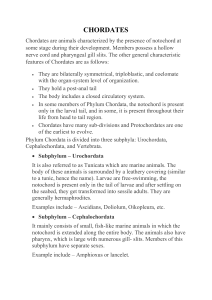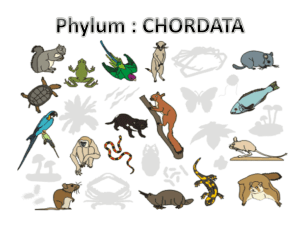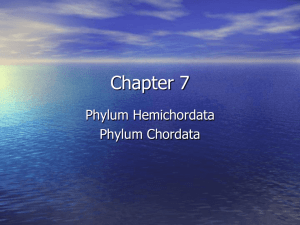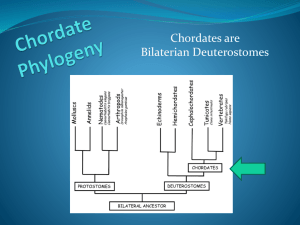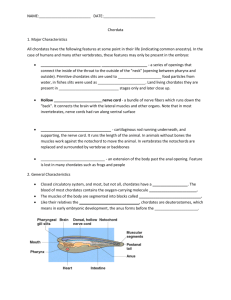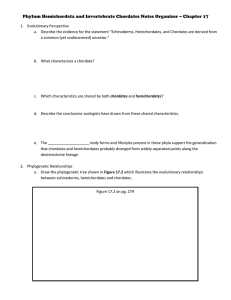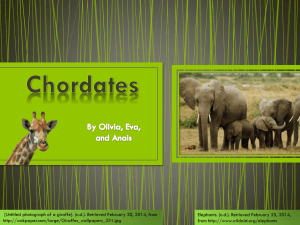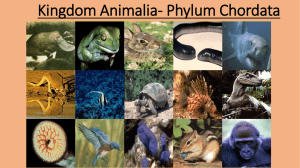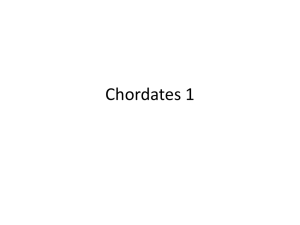Invertebrate Chordates
advertisement
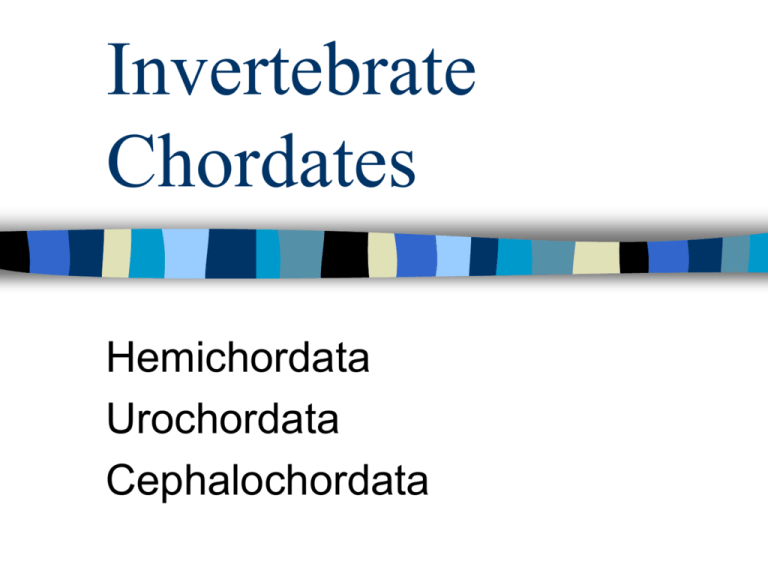
Invertebrate Chordates Hemichordata Urochordata Cephalochordata Hemichordates Deuterostomes Gill slits Dorsal nerve cord Classes of Hemichordates Enteropneusta – Acorn worms – Shallow marine animals Pterobranchia – Rhabdopleura – Colonial, send out feeding zooids Acorn Worm Phylum Chordata All chordates are deuterostomes At some time in their life, all chordates have: – Notochord – Pharyngeal gill slits – Dorsal, hollow nerve cord – Postanal tail Subphylum Urochordata Sea squirts or tunicates Larvae show the characteristics of chordates Adults lose notochord, nerve cord, and tail Only animals to have cellulose in their bodies! Tunicates: Are filter feeders Do not have complex nervous systems Often form large colonies Are monoecious Tunicate Larva Adult tunicates Subphylum Cephalochordata Lancelets (Amphioxus) Notochord runs from head through tail Muscles can contract the notochord Live partially buried in marine sediment Filter feeders Dioecious

